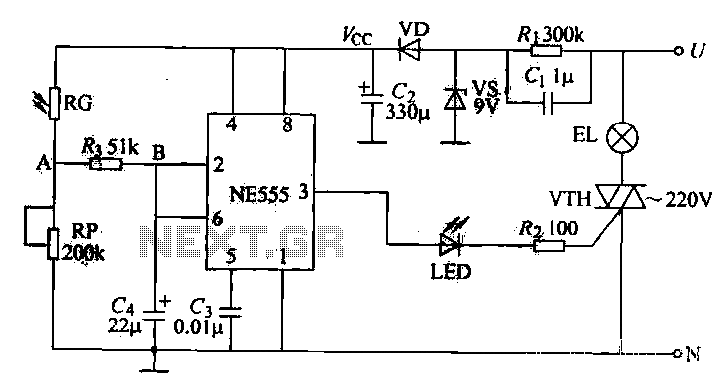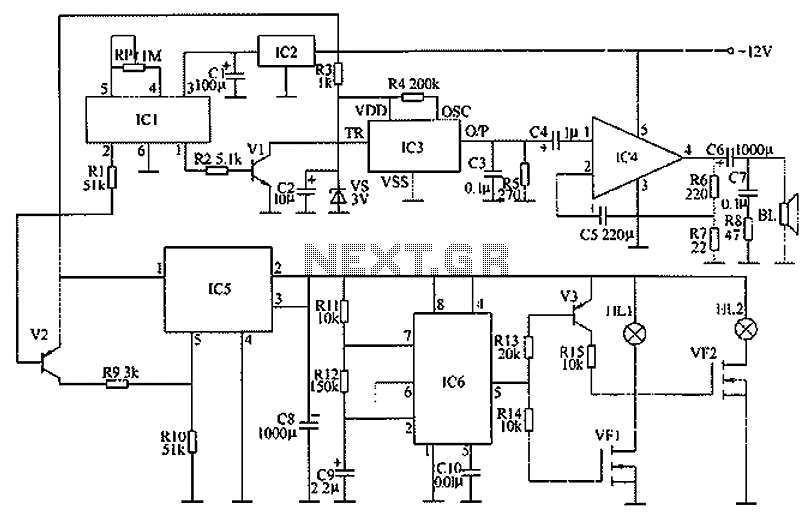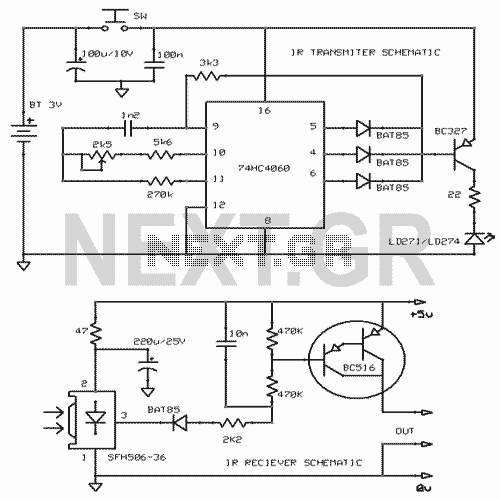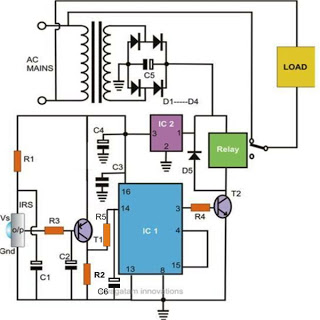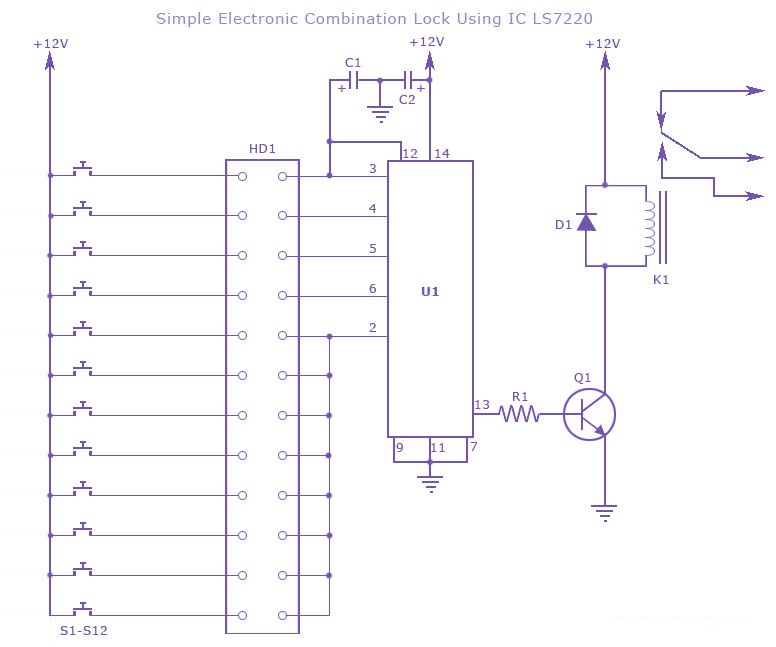
A simple three-way speaker crossover circuit diagram
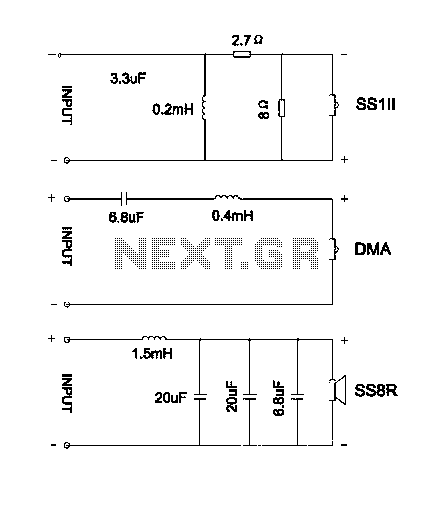
The divider acts as the speaker's brain and is crucial for sound quality. The music amplifier's output signal must be processed through a wave filter element to divide it into specific frequency signals for each unit. A scientifically and rationally designed speaker divider effectively modifies the properties of different speaker units, optimizing the combination of these units' weaknesses. This allows the frequency response of the audio band to become smooth, with accurate phase panning, enabling high, mid, and bass music to be played in a structured, co-produced manner, resulting in clear, comfortable, broad, and natural sound quality. A speaker crossover is a combined filter that divides an audio signal into several frequency bands. An audio divider consists of a high-pass filter and a low-pass filter, with a bandpass filter added for three-way division. This article describes a simple three-way speaker crossover circuit diagram, where inputs can be connected to the same output, as illustrated in the accompanying image.
The three-way speaker crossover circuit is an essential component in audio systems, designed to separate audio signals into three distinct frequency bands: low frequencies (bass), mid frequencies (mids), and high frequencies (treble). This division is crucial for optimizing the performance of each speaker unit, as different drivers are engineered to operate efficiently within specific frequency ranges.
The circuit typically consists of three filters: a low-pass filter for the woofer, a bandpass filter for the midrange speaker, and a high-pass filter for the tweeter. The low-pass filter allows frequencies below a certain cutoff frequency to pass through while attenuating higher frequencies. The bandpass filter permits a specific range of frequencies to reach the midrange driver, while the high-pass filter ensures that only high-frequency signals are sent to the tweeter.
In a practical implementation, the low-pass filter can be designed using an inductor in series with the woofer and a capacitor in parallel, creating a second-order filter that effectively reduces unwanted high-frequency signals. The bandpass filter for the midrange can be constructed using a combination of capacitors and inductors to define the desired frequency range. The high-pass filter, similarly, uses a capacitor in series with the tweeter to block lower frequencies.
The crossover point, which determines the frequency at which the signal is divided, is critical and must be chosen based on the specifications of the drivers being used. Properly designed crossover networks ensure that each driver receives the appropriate frequency range, minimizing distortion and maximizing sound quality.
Overall, the three-way speaker crossover circuit is a sophisticated solution that enables a balanced and high-fidelity audio output, enhancing the listening experience by ensuring that each frequency range is handled by the most suitable driver. This careful engineering allows for a cohesive sound stage, where high, mid, and low frequencies blend seamlessly, resulting in a rich and immersive audio experience.Divider is the speaker of the brain, is crucial to the sound quality is good or bad. Music amplifier output signal must divider wave filter element processing, so that each uni t by a specific frequency signal. To scientific and rational, rigorously designed speaker of the divider, in order to effectively modify different properties speaker unit, optimized combination of such units weaknesses, vividly play their proper potential so that the frequency response of the band becomes too smooth, accurate panning phase, in order to make high, middle and bass music play out structured, co-production, clear, comfortable, broad, natural sound quality. Speaker crossover is a combined filter, an audio signal can be divided into several frequency bands. Road audio divider is made of a high-pass filter and a low-pass filter, and the three-way division has added a bandpass filter.
Described in this article is a simple three-way speaker crossover circuit diagram, inputs can be connected to the same output. as the picture shows.
The three-way speaker crossover circuit is an essential component in audio systems, designed to separate audio signals into three distinct frequency bands: low frequencies (bass), mid frequencies (mids), and high frequencies (treble). This division is crucial for optimizing the performance of each speaker unit, as different drivers are engineered to operate efficiently within specific frequency ranges.
The circuit typically consists of three filters: a low-pass filter for the woofer, a bandpass filter for the midrange speaker, and a high-pass filter for the tweeter. The low-pass filter allows frequencies below a certain cutoff frequency to pass through while attenuating higher frequencies. The bandpass filter permits a specific range of frequencies to reach the midrange driver, while the high-pass filter ensures that only high-frequency signals are sent to the tweeter.
In a practical implementation, the low-pass filter can be designed using an inductor in series with the woofer and a capacitor in parallel, creating a second-order filter that effectively reduces unwanted high-frequency signals. The bandpass filter for the midrange can be constructed using a combination of capacitors and inductors to define the desired frequency range. The high-pass filter, similarly, uses a capacitor in series with the tweeter to block lower frequencies.
The crossover point, which determines the frequency at which the signal is divided, is critical and must be chosen based on the specifications of the drivers being used. Properly designed crossover networks ensure that each driver receives the appropriate frequency range, minimizing distortion and maximizing sound quality.
Overall, the three-way speaker crossover circuit is a sophisticated solution that enables a balanced and high-fidelity audio output, enhancing the listening experience by ensuring that each frequency range is handled by the most suitable driver. This careful engineering allows for a cohesive sound stage, where high, mid, and low frequencies blend seamlessly, resulting in a rich and immersive audio experience.Divider is the speaker of the brain, is crucial to the sound quality is good or bad. Music amplifier output signal must divider wave filter element processing, so that each uni t by a specific frequency signal. To scientific and rational, rigorously designed speaker of the divider, in order to effectively modify different properties speaker unit, optimized combination of such units weaknesses, vividly play their proper potential so that the frequency response of the band becomes too smooth, accurate panning phase, in order to make high, middle and bass music play out structured, co-production, clear, comfortable, broad, natural sound quality. Speaker crossover is a combined filter, an audio signal can be divided into several frequency bands. Road audio divider is made of a high-pass filter and a low-pass filter, and the three-way division has added a bandpass filter.
Described in this article is a simple three-way speaker crossover circuit diagram, inputs can be connected to the same output. as the picture shows.
